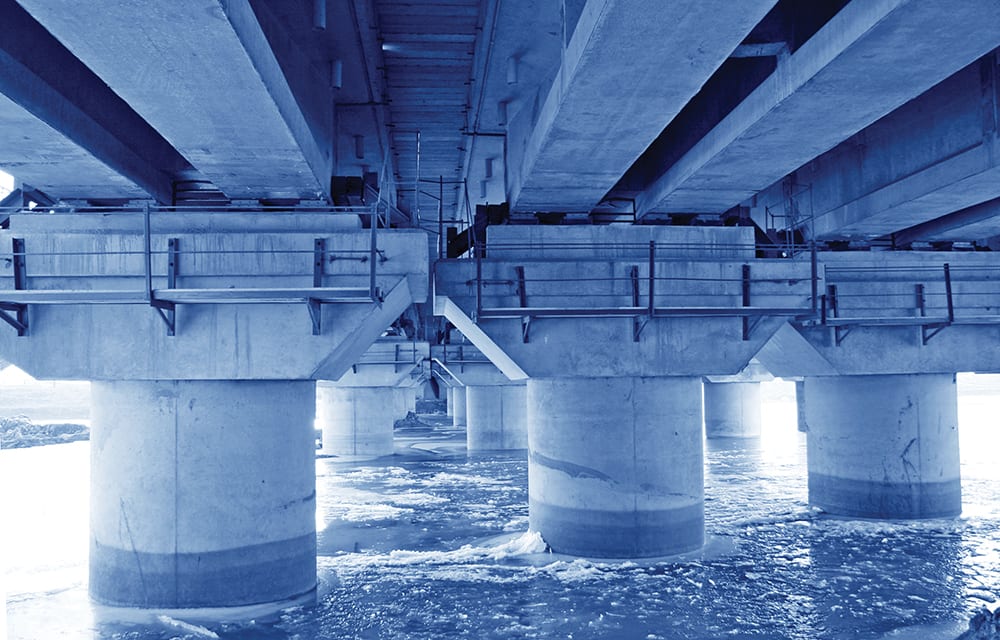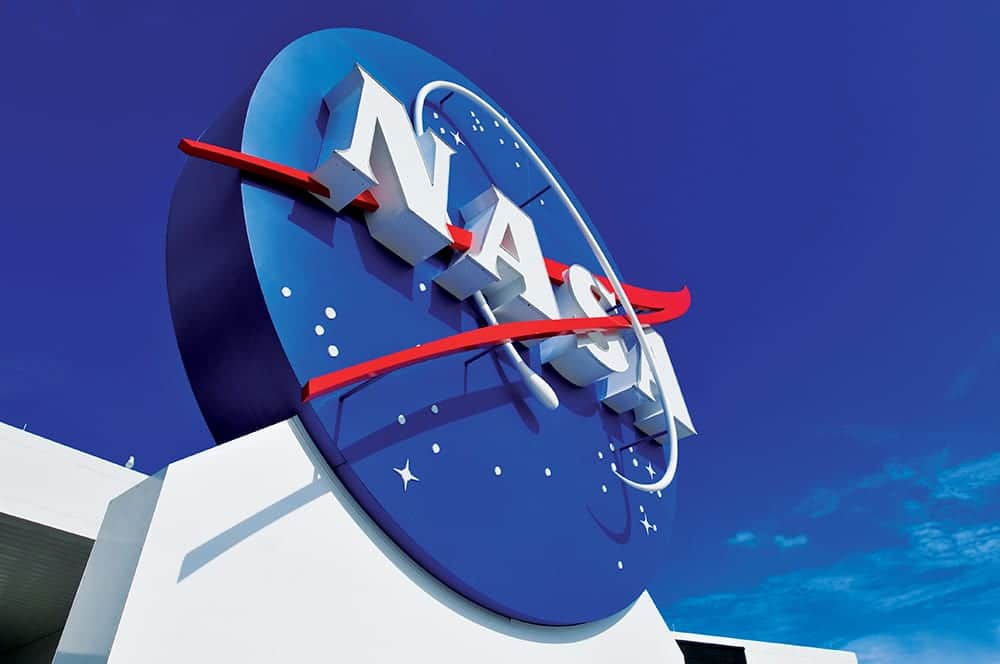The U.S. National Aeronautics and Space Administration (NASA) investigates numerous technologies required to achieve space flight. In addition to designing powerful rockets and planning complex trajectories, the agency has experts focused on the development of advanced materials that provide both protection and functionality for spacecraft and astronauts. Some of these advanced materials are high-tech coatings that also have potential applications here on Earth. The NASA Technology Transfer Program ensures that innovations developed for exploration and discovery are broadly available to the public. Below are a few examples of recent coating technologies developed by NASA.
Corrosion prevention is a major priority for the agency. As a result, they are also focusing on structures on Earth that are generally located in hot, humid climates and in close proximity to the ocean, with constant exposure to salt spray, as well as structures within engines exposed to extreme temperatures and environments. Coating technologies have been developed to address both issues. Because the latter are typically ceramic or metallic systems, this article will focus on the former.
The first example is from NASA’s Kennedy Space Center (KSC), which is seeking licensees for its Anti-Corrosive Powder Particles. The Powder Particle technology combines metallic materials into a uniform particle that can be applied to prevent corrosion of rebar embedded in concrete. The powder is sprayed simultaneously with a liquid epoxy binder onto the surfaces of concrete structures to achieve a uniform distribution of the metallic pigments and provide cathodic protection of the underlying steel in the concrete. After the coating is applied to the outer surface of reinforced concrete, an electrical current is established between the metallic particles and the surfaces of the embedded steel rebar. This approach is advantageous because the coating is applied (and reapplied as needed) via brush or spray to the exterior of the concrete (not to the rebar) after construction is complete. According to NASA, it has applications for parking decks, ramps, and garages; highway and bridge infrastructure; concrete piers, offshore platforms, and other marine structures; cooling towers; pipelines; and buildings, foundations, and other engineered structures.
 NASA’s KSC has also developed and is seeking licensees for its newest liquid-applied coating for corrosion prevention of rebar embedded in concrete. According to the agency, the coating is made of inexpensive, commercially available ingredients and is easily applied to the outer surfaces of reinforced concrete by brush or spray. It is an inorganic, galvanic coating containing various metallic particles including magnesium, zinc, and/or indium along with moisture-attracting compounds that facilitate the protection process. After the coating is applied to the outer surface of reinforced concrete, an electrical current is established between the metallic particles and the surfaces of the embedded steel rebar. Early tests of the coating have shown that it meets NACE International RP0290-90 100-millivolt (mV) polarization development/decay depolarization criteria for complete protection of steel rebar embedded in concrete. NASA has also demonstrated that the rebar becomes negatively polarized, indicating the presence of a positive current flow with a shift in potential of over 400 mV. Like the Powder Particle Technology, the liquid coating is applied after construction is complete. It typically lasts for 10 years and can be reapplied to provide extended protection. This coating has similar potential applications, from concrete balconies and ceilings to bridges, piers, parking garages, cooling towers, and pipelines.
NASA’s KSC has also developed and is seeking licensees for its newest liquid-applied coating for corrosion prevention of rebar embedded in concrete. According to the agency, the coating is made of inexpensive, commercially available ingredients and is easily applied to the outer surfaces of reinforced concrete by brush or spray. It is an inorganic, galvanic coating containing various metallic particles including magnesium, zinc, and/or indium along with moisture-attracting compounds that facilitate the protection process. After the coating is applied to the outer surface of reinforced concrete, an electrical current is established between the metallic particles and the surfaces of the embedded steel rebar. Early tests of the coating have shown that it meets NACE International RP0290-90 100-millivolt (mV) polarization development/decay depolarization criteria for complete protection of steel rebar embedded in concrete. NASA has also demonstrated that the rebar becomes negatively polarized, indicating the presence of a positive current flow with a shift in potential of over 400 mV. Like the Powder Particle Technology, the liquid coating is applied after construction is complete. It typically lasts for 10 years and can be reapplied to provide extended protection. This coating has similar potential applications, from concrete balconies and ceilings to bridges, piers, parking garages, cooling towers, and pipelines.
Mechanical damage to the coating triggers the release of film-forming compounds to repair the damage . . . The technology has the potential for use in corrosion prevention coatings for bridges and other infrastructure, automobiles, ships, aircraft, pipelines, and machinery.
Another approach to corrosion control taken by the KSC scientists at NASA involves development of High-Performance Polyimide Powder Coatings. Polyimides with melting points much lower than those of traditional polyimides used for insulation have been formulated into powder coatings with excellent thermal stability, chemical resistance, and electrical properties. The coatings, which are based on polyamic acid resins, are currently undergoing testing, with encouraging early results regarding salt spray corrosion resistance. NASA believes they have potential applications for the protection of pipelines and other infrastructure, machinery, exposed metal parts, and automotive components. The agency is looking for partners to commercially develop this coating technology.
The researchers at NASA’s KSC have also developed a smart, environmentally friendly coating system for early detection and inhibition of corrosion and self-healing of mechanical damage without external intervention. The coating is designed to inherently detect the onset of corrosion in the coated substrate and respond autonomously to control it through the release of corrosion inhibitors and indicators from specially formulated microcapsules and particles. The onset of corrosion triggers the release of compounds that indicate and inhibit corrosion. Mechanical damage to the coating triggers the release of film-forming compounds to repair the damage. NASA believes the multifunctional coating system will reduce maintenance costs and improve safety by preventing catastrophic corrosion failures. The technology has the potential for use in corrosion prevention coatings for bridges and other infrastructure, automobiles, ships, aircraft, pipelines, and machinery.
In addition to corrosion prevention, the prevention of insect adhesion is another ongoing challenge for NASA. Accumulation of insect strikes on the leading edge of airplane wings is a more serious problem than one might realize. Depending on the magnitude, such accumulation changes the aerodynamic characteristics of the wing, causing a change from laminar to turbulent flow and resulting in decreased lift, increased drag, and reduced fuel efficiency. Compared with other possible solutions, coatings offer several benefits, including ease of application, potentially negligible weight penalty, reduced environmental concerns, better economics, and continual function throughout the flight profile, according to the agency.
NASA’s Langley Research Center (LRC) has developed a fluorinated alkyl ether containing epoxy system designed as a robust anti-insect coating to improve aircraft efficiency. It believes the coating will also be useful in other applications where reduction of insect residue adherence is desirable, such as in the automotive and wind energy industries. The easily applied epoxy coating has improved hydrophobicity even when the concentration of the fluorinated aliphatic component is as low as 1 wt% due to preferential migration of the functional groups to the surface of the polymer and incorporation of nano- to microscale particle fillers. Several formulations of this coating technology were flight tested on Boeing’s ecoDemonstrator in April and May of 2015.
NASA has also developed contaminant-resistant polyurethane coatings containing fluorine groups for use in extreme environments. These systems can be used not only for prevention of the adhesion of insect residue on aircraft, automobiles, and wind turbine systems, but as general anti-soiling coatings and coatings that provide improved stain and corrosion resistance and greater weatherability, according to the agency. They have been tested for adhesion mitigation of insect residues in a controlled insect impact facility and on the ecoDemonstrator Boeing 757 aircraft. Insect reside was lower than that observed on a non-coated surface, and the coatings were shown to be hydrophobic with durability comparable to current state-of-the-art polyurethane formulations. The coating also meets current aircraft manufacturing requirements.
Prevention of ice buildup on aircraft is another area where NASA has found that novel coating technology can help overcome real challenges. Scientists at LRC have developed novel monomers and polymers for the formation of coatings used to de-ice commercial aircraft and wind turbines. The coating prevents ice formation rather than removing it, minimizing the need to apply deicing agents. It works by mimicking the behavior of anti-freeze proteins (AFPs) found in certain fish and amphibians, imparting properties including reduction of the freezing point, ice recrystallization inhibition, and ice restructuring (changing ice crystal morphology), according to NASA. The result is ice growth inhibition and ice formation prevention via an adsorption mechanism.
Other interesting coating technologies developed by NASA include a low-cost, temperature-sensitive coating (up to 600°C) based on hematite (iron(III) oxide) in a binder that can serve as an alternative to photoluminescence techniques; conductive inks containing carbon nanotubes and metallic particles for inkjet printing that have resistances in the kilo-ohm range; durable yet flexible polyamide/polyimide aerogels that are 500 times stronger than conventional silica aerogels and useful for thermal insulation and lightweight structures; and thin-films with integrated structural and functional elements with increased damage tolerance to tearing and ripping produced using commercially available additive print manufacturing equipment.
CoatingsTech | Vol. 16, No. 1 | January 2019
